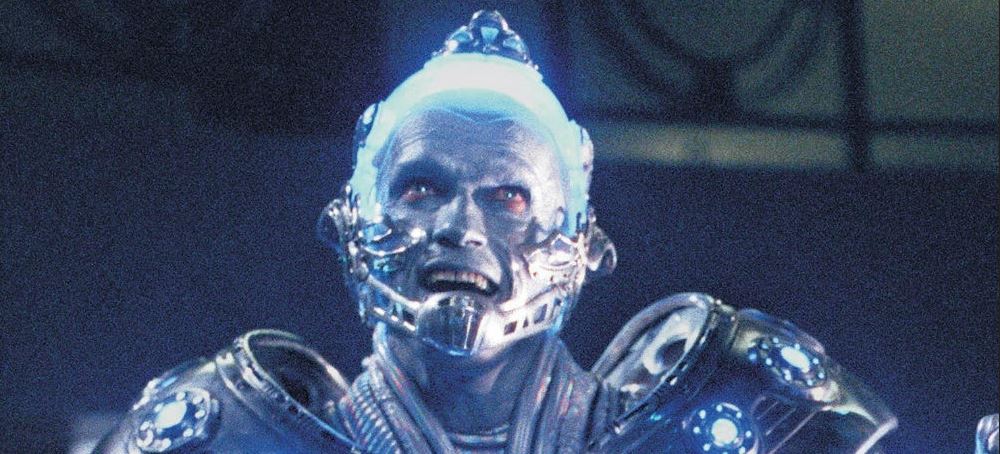Written By: Dan Geer
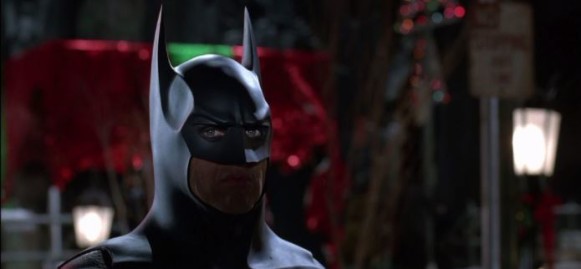
For kids of the 1970s and early 80s, Star Wars was the big blockbuster movie experience, and rightly so. Nothing was bigger. For me personally, while I technically saw Return of the Jedi in the theater when I was three, I don’t really remember much from that day. I highly enjoyed the films growing up, and even had a few of the action figures, an R2-D2 toy toter, and the original three films on VHS. But I never truly experienced seeing the Star Wars films in the theater until the Special Editions were released in 1997.
It was really the first Batman from 1989 that was my first big blockbuster theatrical experience. Aside from Superman: The Movie (1978), the comic book genre had really disappeared into oblivion with the abysmal sequels in the 1980s. So when Tim Burton’s Batman came along, it was the biggest craze since the Pet Rock, and put comic book movies back on the map. As a kid, nothing was more cool than that film. NOTHING.
Tim Burton got it right. Contrary to the popular Mr. Mom opinions that reared their ugly heads prior to the film’s release, Burton knew what he was doing when he cast Michael Keaton as Batman. He understood the duality of the Dark Knight, and that he was a character that dwelt in the shadows – scary and brooding to anyone who happened to cross his path. He knew Keaton would be able to embody both Bruce Wayne and Batman flawlessly. Audiences expecting “Wham!” and “Bam!” were thrown for a loop, and hardcore comic book geeks had finally gotten their wish for a darker version of Batman on screen.
Don’t get me wrong, the Adam West version of Batman was fantastic, but it was tongue-in-check comedy, inspired by the Batman comics of the 1960s. When Bob Kane created the character back in the 30s, the character of Batman was intended to be a terrifying creature of the night with a dark history. Frank Miller honed in on that history and refined it for a new generation when he wrote Batman: The Dark Knight Returns in 1986, which helped bring Batman back to the roots of what made the character so fascinating. It solidified the concept of Batman as a terrifying psychotic force hiding in the dark, fighting against the corrupt. Tim Burton’s first Batman film reached into that concept, drawing primarily from those core principles to give the characters and Gotham City the look and feel they had long since deserved.
When the film was released, it was huge. Massive, even. You could not venture out into the public without seeing that Bat symbol, whether it’d be on t-shirts, billboards, cereal boxes, magazines, etc. That symbol was everywhere. The film was also the first VHS release to make its way into retail stores just a mere five months after the theatrical release – just in time for the Christmas season because of how popular it was. Of course, being only nine years old at the time, I had to wait until Santa Claus came, and we somehow received three different copies of the movie under the tree (two of them easily became same-day gift items for relatives). It was a fantastic day.
I had the remote control Batmobile, Batwing toy, and the Batman and Joker action figures from the film. I collected the trading cards. I even later got the chance to see a full-sized Batmobile replica in my home town for some kind of auto show (needless to say, this blew my mind at nine years old). This also lead me to the Adam West Batman reruns on TV, and like every child, I took it absolutely seriously, even though it was completely different from Burton’s film. I even labeled everything in my backyard to help create the illusion that I was Batman and the yard was my cave. Batman was my bread and butter as a kid.
Because of the enormous success of the first, at least one sequel was inevitable. We got three over the course of the 1990s. But how could any sequel to Burton’s original 1989 film possibly live up to it? Well, of course, none of the sequels did. But at the time, I loved them anyway and really didn’t make much distinction between them growing up. It was Batman, and I was in – all the way. Obsessed to the core, even if each sequel was different from what had come before. Later on, of course, the reality set in about just how not up to par most of the sequels were.
Recently, I decided to finally pick up the 4-Film Favorites Collection to revisit the sequels after having abandoned them for quite a few years. I had seen bits and pieces on TV here and there, but never really sat down and watched them all the way through in 1080p HD with surround sound in the comfort of my own home. I owned them all on VHS back in the 90s, but by the end of the decade I had switched to DVD and never looked back, nearly forgetting about the sequels that I had become less and less fond of over time. It has been quite an adventure looking back upon these films, and surpisingly, despite their flaws, I wound up actually having a really great time watching them for different reasons.
So without further ado, let us venture back into that strange sequel era, and experience everything from Tim Burton’s foul turn into darkness, all the way through the bright candied neon atmosphere conceived by director Joel Schumacher. Watch out for the Bat-nips!
Batman Returns (1992)
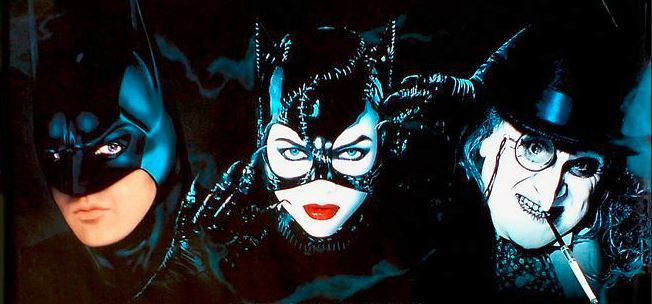
Three years after the success of Burton’s original Batman, the sequel was a film that seemed like it took ages to get here. The nine year-old in me never died, and I couldn’t wait to see what came next. Burton and Keaton return? Danny DeVito as Penguin? Michelle Pfeiffer as Catwoman? What could possibly go wrong?
Well, quite a bit actually. Even now, while there is much to admire about this film, and it carries over some of the same sensibilities Burton had from the first film – the problems with Batman Returns really come down to issues of tone and lazy writing. It’s not a bad film, and the actors give it their all for sure and create some truly iconic moments. But it definitely was a big disappointment after having pulled off the first film so well.
For starters, the tone of the film was just too dark, and this primarily manifested itself through the character of the Penguin. We’ve heard it all before, but it really was far more dark and dismal than the original film. The Penguin, while a very interesting take on the character, was just outright disgusting. I didn’t mind that he was weirder, or a bit more grotesque than the comics. That part was fine. But gushing greenish-black blood (or whatever it was) out of his mouth? Biting the nose off of his campaign volunteer? Where was Burton getting this stuff? The Penguin consuming raw fish for lunch was enough for audiences to get the point, and yet they conceived of more ways to gross us out throughout the course of the film.
DeVito was right for the part, but the character really could’ve been more sophisticated like the comic, despite his design being more “Burton-esque.” His antics could’ve been more subtle. A brilliant criminal strategist that just happened to be deformed physically, perhaps? Instead, he was a gross blob of a villain. Not entirely unwatchable, but sorely misunderstood by the writers. He really makes you feel like you drank sewer water. Maybe that’s what they were going for, but audiences just didn’t care for it, understandably. It was too much. The character’s history and how he lived out his life was plenty for us to get the point that he was almost not human.
Michelle Pfeiffer was actually fantastic as Catwoman. Perfect casting, hands down. The issue here is that the film does nothing to help the audience understand just how a woman could suddenly go from being a clumsy secretary to a professional gymnast, executing backflips in tight leather and high heels, handling a whip like Indiana Jones. It just takes more than a woman surviving a fall from a great height and getting licked by a bunch of stray alley cats to make us believe in the transformation.
Yes, that story line originated from the comics, but the film needed more exposition to define for the audience that cats maybe have some sort of mystical magic that could make Selina Kyle’s transformation believable. It had none of that. If perhaps Selina Kyle had some sort of a fascination with cats (she did own one), and we saw her reading up about their mystical qualities in her spare time a bit, or perhaps discussing it with another character in a few bits of dialogue – then maybe the audience could buy it. We just needed something to hang our logic on while we went for the ride. Instead, we’re just expected to believe it based on nothing. Sure, it’s a comic book movie, but it’s also a live-action film. It still feels like the story could actually happen in real life to some extent. We just needed a little more to believe in the fantasy.
This isn’t the only script issue. How did the world did Penguin get his hands of the blue prints for the Batmobile? Even if he could, the film never explains how, and it really needed to since obviously Bruce Wayne went through a great deal of trouble to keep his identity a secret. This would mean whoever built the Batmobile for him would have to have given these prints to the Penguin, or somehow the Penguin would’ve had to break into Wayne Manor or the Batcave to steal them. We were given no exposition on this at all. This entire plot point just doesn’t work.
To top it all off, the film focuses too heavily on the villains. Batman gets a fair amount of screen time, but is hardly seen in the first hour of the film. Catwoman and Penguin were given far more to do on screen, and that’s a shame really. If the film focused more on the Dark Knight, we may have received a more nuanced film, more in line with the original, albeit different, exploring new facets to the character we hadn’t seen before. The film is called Batman Returns, after all.
Having said all that, Batman Returns still has a lot going for it. It still feels like it sits well alongside the first – despite being the lesser of the two films (and feeling more like a sequel to Burton’s Edward Scissorhands, visually). It’s well-acted (don’t forget Christopher Walken’s sinister performance as Max Shreck), hauntingly beautiful to look at, and rides on the shoulders of a fantastic musical score (composed once again by Danny Elfman). The film was definitely a disappointment, but it’s not a bad movie. I like it for its strengths, and cringe at its weaknesses. It really is hard to outright hate the film when so much of it still feels like the same well-executed universe established by the first. Plus, it’s Michael Keaton’s last outing as the Dark Knight, so it is worth watching for him alone, even if he does have less screen time than the villains.
Rating: ![]() (out of four)
(out of four)
Batman Forever (1995)
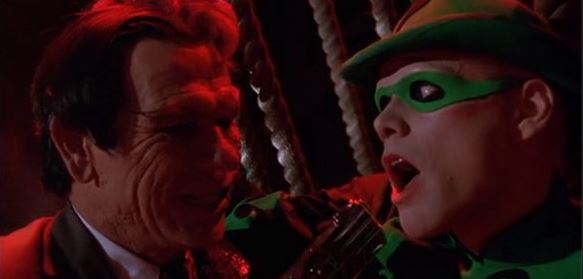
Warner Brothers really felt that Batman Returns went too far. Dark was one thing. The macabre was something else entirely, and they were right. However, while Batman Forever really should’ve only backed off just a bit on this and gone back to the aesthetics and genius of the first film – they instead decided that hiring a new director for a fresh take on the franchise was the better way to go.
So was it? In my person opinion, yes and no. Director Joel Schumacher (The Lost Boys) was actually a great choice to change up the tone a bit, although it wasn’t always for the better. He was obviously inspired by the Adam West TV series, and Batman Forever does bring in some of that campy humor that the first two films avoided. But for me, it wasn’t overdone… for the most part. Over the top in some parts for sure, but the film has a sense of balance with the dark as well.
It really does this by diving deeper into the character of Bruce Wayne/Batman (played terrifically by Val Kilmer) and why he does what he does. Those flashback scenes with him at the funeral, or in the cave with the creepy bat flying towards him, were very well done, and his relationship to Dr. Chase Meridian (Nicole Kidman) really helped put his character into the forefront. She questions Wayne’s psyche, trying to get into his head, and in turn, the story is forced to go there. That’s a good thing, and really made up for the lack of screen time Wayne got in Batman Returns – for both Bruce Wayne and Batman. It was actually refreshing, and just dark enough to feel like the film belongs with the first two.
The character of Dick Grayson/Robin also really gets a good introduction. Chris O’Donnell actually played the part to perfection. Seeing the terror in his eyes after seeing his dead family lying on the circus floor, or witnessing his rebellious side take hold of him so far that all he could do was obsess over killing Two-Face – the character of Robin was well developed here, and gave the love/hate dynamic between he and Bruce Wayne/Batman something malleable to work with.
Where the film strays a bit too far from what the first two films is quite apparent when you watch it. The idea behind this new direction from Schumacher was to make the film feel more like a comic book brought to life, and brighten it up in terms of tone and humor. He wanted a “heightened reality.”
Hiring Jim Carrey as The Riddler and Tommy Lee Jones as Harvey Two-Face was actually great casting for helping to pull off this new direction for the franchise (although why they didn’t have Billy Dee Williams reprise the character of Harvey Dent from the 1989 film, I’ll never understand). They played their parts very well, even if they were very over the top. Their performances fit the style of the film, but at the same time didn’t necessarily go too far with it to the point where these villains feel like they exist in a different universe from the Tim Burton films. I wouldn’t go so far as to say it was “just right,” because sometimes they came right up to the line but didn’t cross it, and that was a little too close for comfort. Ultimately, they both kept their characters just dark enough, even if they did have a goofy sense of humor that didn’t always work.
Batman Forever definitely feels more like a comic book, not only in the way the characters act, but also in how the sets look (bright neon colors everywhere). It is definitely reminiscent of a different era of Batman that the first two films were, but still feels like it belongs with Burton’s vision of the Dark Knight (he was still a producer on the film). Perhaps it is best to think of this film as if quite a few years have past, like in the comic book world, and things look and feel a bit different than when it all first began but still the same world. This film strikes a good balance of light and dark overall. Despite going too far some times, and a few bits that stretch the film’s believability (bank vault scene, anyone?), it was successful at correcting some of the errors of Batman Returns and feels much more focused. I still really like this one.
Rating: ![]() (out of four)
(out of four)
Batman & Robin (1997)
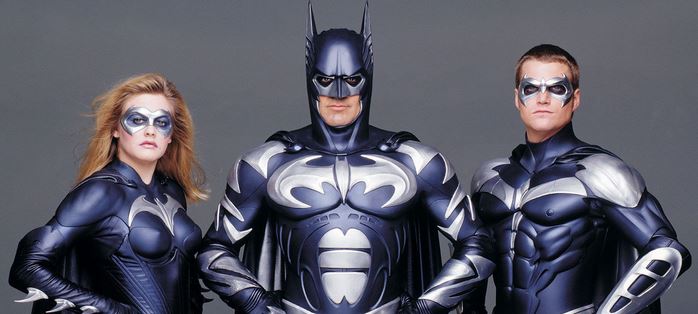
Well gees, where to begin? Batman & Robin is an absolute mess. If direction for Batman Forever was heightened reality, then the direction for this film had to have been “no reality.” Instead of keeping the nice balance of light and dark like Batman Forever, Warner Brothers and Schumacher decided to make the fourth entry in the franchise more kid-friendly – meaning going overboard with the candy-colored neon (it was almost too much in the previous film, let alone here), completely unrealistic action sequences, and creating a film that would sell toys. That was literally their approach.
To their credit, they achieved exactly what they set out to do. The film was far lighter than any of the previous films in the series – so much so that it basically all but abandoned any notion that Batman was a shadowy creature of the night. Both Batman and Robin became so public in Gotham City that they would attend parties, fund raisers, etc. Batman, this time played by George Clooney (yeesh), had his own personal Bat-Visa card. Arnold Schwarzenegger’s Mr. Freeze had a cold pun for just about every line, and Uma Thurman’s Poison Ivy was on the same level of camp as Julie Newmar’s Catwoman from the 1960s TV series.
The entire film is filled with this level of camp. It was quite apparent that there would be no more darkness for this series, and that Warner Brothers and Schumacher basically wanted the Adam West TV series repackaged for a new generation on the big screen with Batman & Robin. The franchise went from Dark Knight to Caped Crusader.
As was said before, I really love the Adam West TV series, and in many ways it is very much like the comic books from the 1960s. They were more campy and bright than when Batman was first created, and the type of “straight-faced” humor created in the TV series was fantastic. Batman & Robin basically embraced that. The problem lies in the fact that the series was already established as being the dark version of Batman, even with Batman Forever to some extent. It never really crossed the border like Batman & Robin did.
Not only does the film not give us that balance that Batman Forever had, but it doesn’t have a sense of balance at all when it came to the story itself. Too many characters with too many point points. We have to not only catch up with Batman and Robin, but we also have to establish the origins of Poison Ivy, Mr. Freeze, and even Batgirl (which deviated from the comic book in that she was not Commissioner Gordon’s daughter in this film). Plus, there’s a mad scientist (yet another character) who creates Bane. Yes, even Bane is in this movie, and he’s ridiculous (“Monkey, WORK!”). To top it all off, we have yet another plot point dealing with Bruce Wayne’s butler, Alfred (played consistently by Michael Gough in all four films). While it is probably the best and most endearing storyline in the film (the only one taken seriously), it cannot balance out the rest of this mess of a movie.
The neon aesthetic of Batman Forever carries over to this film, and gets multiplied by 1,000 here. There are so many design concepts where the lighting doesn’t even make sense (why were there neon planets being projected all over the place inside of the Gotham observatory?). Sure, it was pretty outrageous even in the previous film, but it didn’t feel like it went overboard there. In Batman & Robin, the set designers totally jumped ship, drowning in an ocean of Trolli Sour Brite Crawlers that exploded into a tidal wave of Skittles for everyone to ride on with no sign of a stable shore line in sight. We could definitely taste the rainbow – and couldn’t get the taste out of our mouths.
Take all that, add nips to the costumes as well as outrageous stunts and plot points that defy any sense of believability – well, it becomes very apparent that the studio and director did a complete 180, and somehow still tried staying connected to what came before. It was basically a reboot that did not work. Despite being consistent with a certain era of the comic books and the Adam West TV series to some extent, it was the red-headed step child of the series that just did not fit with the rest of the family – at all, and doesn’t even really work as a film on its own in terms of the script.
But hey, if you want a stand alone comedy, Batman & Robin is the film to watch…
Rating: ![]() (out of four)
(out of four)
—-
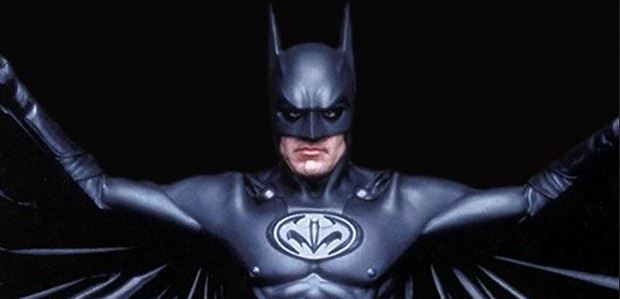
At the end of the day, this franchise now stands in the shadow of Christopher Nolan’s The Dark Knight Trilogy. However, even though it is now the lesser of the two Batman cinematic series, two of the three 90s era Batman sequels are still quite enjoyable on their own when not comparing to how good we have it now, and it is somewhat admirable that each film in the series embodies a specific era of Batman comics in terms of tone. They really can be looked at as follows:
- Batman (1930s-40s comic era)
- Batman Returns (1990s comic era)
- Batman Forever (1930s – 1950s comic era)
- Batman & Robin (1960s comic era)
But because of the lack of consistency in tone between films, and the horrid scripting issues in Batman Returns, and to a greater extent Batman & Robin – the franchise ultimately died. Looking back, at least the first three films felt like they belong together, despite their flaws, and could’ve wrapped up with Batman Forever to give us a nice trilogy. But the further along they went, the worse things became until it killed any chances for the Dark Knight to return to theaters for eight long years, and it had to be a reboot in order to clean up the mess left behind by the studio and Schumacher. The slate had to be wiped clean.
The best we can say about Batman & Robin is that it planted the seed for director Christopher Nolan to give us his masterpiece of a trilogy later on. Ever since then, Batman has been firmly brought back to being the creature of the night we all know and love, and there’s no going back now. So, in a way, thanks and forgiveness are due for Warner Brothers, Tim Burton and Joel Schumacher after all these years. Both directors gave us at least one decent Batman film, and the lesser films they gave us inadvertently paved the way for a better cinematic future for the Dark Knight.
